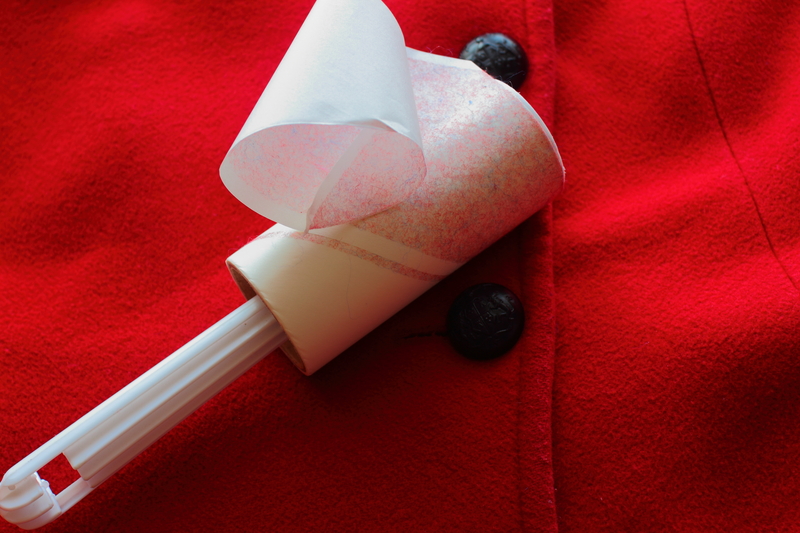Curtain Cleaning Techniques for a Fresh Look
Posted on 31/08/2025
Curtain Cleaning Techniques for a Fresh Look
Curtains do more than just block sunlight or offer privacy; they add elegance and personality to any room. However, like any fabric, curtains attract dust, allergens, pet hair, and odors over time. Routine curtain cleaning not only keeps their fabric vibrant and soft but also maintains a hygienic atmosphere in your home. In this comprehensive guide, we'll explore several curtain cleaning techniques--from basic maintenance to deep-cleaning strategies--ensuring your window treatments always boast a fresh, revitalized look.

Why Is Curtain Cleaning Important?
Before diving into the cleaning methods, it's essential to understand why regular curtain maintenance is important. Dirty curtains can:
- Harbor dust mites, allergens, and bacteria, worsening air quality and aggravating allergies.
- Develop unpleasant odors from smoke, cooking, or moisture buildup.
- Lose their color and sheen rapidly when dust and grime accumulate.
- Form mold and mildew in humid environments, potentially damaging the fabric permanently.
Prepare Your Curtains For Cleaning
Proper preparation is critical for effective results when using any curtain cleaning technique:
- Check the care label: Inspect your curtain labels for recommended cleaning methods--some fabrics may only allow dry cleaning, while others permit hand or machine washing.
- Remove hooks and accessories: Take down all curtain hooks, rings, and weights.
- Shake off loose dirt: Give your curtains a good shake outside to remove dust and loose debris.
- Test for colorfastness: Dab a hidden area with a damp cloth to ensure the color doesn't bleed.
Top Curtain Cleaning Methods for a Fresh Look
Different curtain fabrics require unique cleaning approaches. Below, we outline the most effective curtain cleaning methods for every type.
1. Vacuuming Curtains: The Quick Freshening Technique
For most curtains, especially heavy fabrics and those labeled as dry-clean-only, regular vacuuming is the simplest way to keep them looking bright and dust-free.
- Use an upholstery attachment: Attach the brush tool to your vacuum cleaner.
- Work from top to bottom: This technique prevents re-soiling cleaned areas with falling debris.
- Pay attention to pleats and folds: Dust often hides in the creases. Use a gentle, thorough motion.
2. Steaming Curtains: Quick and Chemical-Free
For a truly fresh curtain look and odor elimination, consider steam cleaning:
- Choose a handheld steamer: These are designed to reach high areas and maneuver easily along curtain panels.
- Work from top down: Let gravity do the work, and avoid re-steaming the same area, which could cause water spots.
- Allow to air dry: After steaming, keep the curtains extended and let them dry fully before rehanging any hardware.
3. Machine Washing: For Washable Fabrics
If your curtain labels permit, machine washing is an efficient way to deep clean:
- Use cold or lukewarm water: High temperatures can cause shrinkage and fading.
- Select a gentle cycle and mild detergent: Protects delicate fabrics from wear and tear.
- Hang to dry: Avoid tumble drying, which can distort the fabric or cause wrinkles that are difficult to remove. Use a washing line or shower rod for best results.
4. Hand Washing: For Sheers and Delicates
Some curtains, especially sheers or lace, may only tolerate gentle hand washing:
- Fill a clean tub with lukewarm water and a mild detergent: Agitate gently to dissolve the soap.
- Soak the curtains: Let them soak for 10-15 minutes, gently swishing now and then.
- Rinse thoroughly: Carefully rinse with clean water until no detergent remains.
- Press out excess water: Do not wring or twist--the fabric may distort.
- Hang to dry: Once drip-dry, re-hang while slightly damp to avoid creasing.
5. Dry Cleaning: For Specialty Fabrics
If your curtains are made of silk, velvet, wool, or have embellishments, dry cleaning is mandatory:
- Read the label before proceeding: Many luxury or lined drapes are marked "dry clean only."
- Use professional services: Choose a cleaner experienced with curtain and drapery fabrics.
- At-home dry-cleaning kits: In a pinch, some kits allow gentle freshening between professional cleans but should only be used with compatible materials.
6. Spot Cleaning Curtains: Targeting Stains and Spills
Occasionally, curtains suffer localized stains from food, drinks, or dirty hands. Spot cleaning provides a rapid fix:
- Blot, don't rub: Immediately dab stains with a clean, damp cloth to avoid spreading.
- Use a mild solution: Mix water with a small amount of gentle detergent or white vinegar for light stains.
- Test in an inconspicuous spot first: Ensure the solution doesn't bleach or discolor the fabric.
- Pat dry: Use a clean towel to absorb excess moisture after cleaning.
Other Curtain Freshening Tips
Beyond curtain cleaning techniques, several simple practices help maintain a freshened curtain look longer:
- Regular airing: Occasionally, open windows and allow fresh air to circulate, which helps eliminate trapped odors from curtains.
- Weekly dusting: Use a microfiber duster or lint roller to remove pet hair, lint, and pollen.
- Sunshine exposure: Every few months, hang your curtains outside on a breezy, sunny day--sunlight is a natural deodorizer.
- Rotate curtains: If you have multiple sets, swap them periodically to even out wear and sun exposure.
- Protect from direct sunlight: Use blinds or sheers as an under-layer to prevent fading caused by direct UV rays.
How Often Should You Clean Curtains?
The right frequency for curtain washing depends on your environment. In most homes, a deep clean every six months suffices, but you may need to clean more frequently if:
- You live in areas with high pollution or pollen.
- You have pets or smokers in the household.
- Your home is prone to humidity or mold.
Common Curtain Washing Mistakes to Avoid
Even with the best intentions, it's easy to damage your window treatments by making these common errors:
- Using harsh detergents: These can fade or weaken delicate fabrics.
- Hot water and dryer heat: Both can shrink or damage many curtain textiles.
- Skipping the colorfastness test: This can result in irreversible dye bleeding.
- Not removing hardware: Metal hooks and rings can snag or tear fabric during washing.
- Ignoring care instructions: Always read labels and follow recommended cleaning procedures.

Frequently Asked Questions about Curtain Cleaning
Can all curtains be cleaned at home?
No, not all curtains are safe for home cleaning. Specialty fabrics such as silk, velvet, or heavily lined drapes may require professional dry cleaning. Always check the manufacturer's care label before attempting any cleaning method.
How do I prevent curtains from shrinking or wrinkling?
Opt for cold or lukewarm water and avoid high-heat dryers. After washing, shake the curtains gently and hang them back on the curtain rod while slightly damp to allow wrinkles to drop naturally as they finish drying.
Are there alternatives to synthetic detergents?
Yes! For natural fabric curtains, consider using eco-friendly or plant-based detergents. These are gentler on both fabrics and the environment. Always test new products on a small, inconspicuous area first.
What is the best way to remove hair and lint?
A lint roller or a lightly dampened rubber glove quickly picks up pet hair, lint, and fuzz from curtain surfaces.
Should I iron my curtains after cleaning?
It depends on the fabric. Delicate or synthetic curtains may be damaged by direct heat. If ironing is necessary, always use the lowest heat setting and a pressing cloth. Many curtains will become wrinkle-free if rehung while still damp.
Conclusion: Give Your Curtains a New Lease on Life!
Curtains are often overlooked in regular cleaning routines, yet they play a vital role in both home decor and indoor air quality. By applying these proven curtain cleaning techniques--from regular vacuuming to specialized dry cleaning--you can easily maintain a fresh, inviting ambiance without constant replacements. Check care labels, stay consistent with maintenance, and act on stains promptly for curtains that remain beautiful and clean for years. Start implementing these strategies today, and enjoy how simple it is to keep your curtains looking as good as new!




